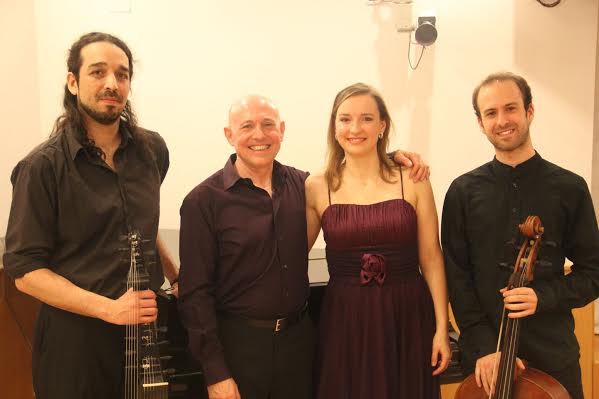
Will take place at 7pm
If we take a close look at Italian and English baroque music, we find over 150 years of continuous, exuberant creativity in the history of Western music. It was Claudio Monteverdi and the Florentine Camerata who signalled the commencement of opera, in the form of the recitar cantando style featured in the composer’s earliest Italian operas, such as L’Orfeo and L´Incoronazione di Poppea. Francesco Cavalli, a student of Monteverdi’s, continued to develop what he had learned from his maestro, culminating in the opera La Calisto, which was first performed in 1651. One of the central themes of this work is the goddess Diana and her love for the shepherd Endymion.
Music for dance was a widespread genre in 17th-century Italy and Europe, and was commonly performed at social gatherings and events at almost all levels of society. As a result, there were a number of standard dances that were generally well-known, and everyone knew how to dance them. Chaconnes, sarabands and follies are just three examples of such dances. The musicians of the time had to be able to improvise melodies spontaneously, and to that end some of them wrote down numerous examples, mainly for didactic purposes. One of these was Giovanni Battista Vitali, who proposed a few examples for the violone, an instrument similar to the double bass and cello of today.
A little later on came the Italian composer Antonio Caldara, better known for his cantatas and the oratorio Maddalena ai piedi di Cristo. However, Caldara also wrote several operas, including the pastoral piece La Constanza nel amor vince l´inganno. Completed in 1710, the opera has only been partially conserved, with only a few arias having survived to the present day.
Meanwhile, the outstanding figure in 17th-century English music was the composer Henry Purcell, known both for his numerous songs and the collection Orpheus Britannicus, and for his operas Dido and Aeneas and Indian Queen and the incidental music he wrote for the tragedy Pausanias. The duo My dearest my fairest (attributed to his brother, Daniel Purcell), has both parallels and contrasts with Monteverdi’s famous Pur ti miro, in which on repeated occasions we hear the affirmative “sí” (an allusion, perhaps, to the most intimate words in the act of love). However, in Purcell’s duo we hear the words “No - never change, my dearest, my fairest”, all the while knowing that the dalliance between Pandora and Argilius is no more than an idle pastime that forms part of a cold political strategy.
Organized by: Residence for Researchers CSIC-Generalitat of Catalonia